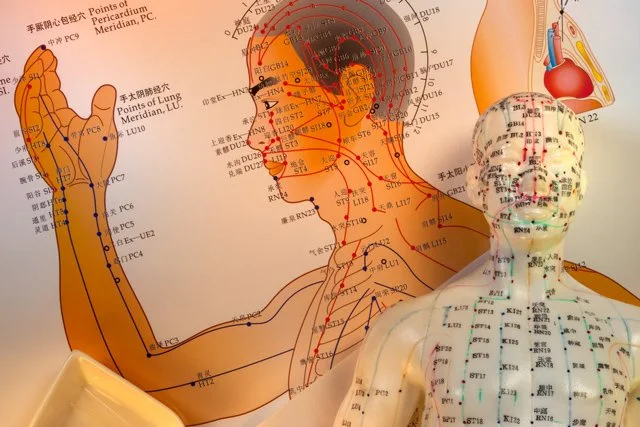The Meridian Thread: A Subtle Body Practice for Listening Within
Beneath the skin, deeper than muscle and bone, lives a web of energetic rivers—the meridian channels that map our inner terrain. In Traditional Chinese Medicine, these pathways are more than theory; they are portals. They reveal the moods of the organs, the tides of our emotions, and the hidden momentum of our internal world.
To practice yoga through the lens of meridian flow is to decentralize the pose and begin to trace sensation like a whisper: along the inner leg, through the lung gates under the collarbone, across the scapula like wind passing through pine. This is no longer movement for shape—it is movement for communication.
Take dragonfly pose, for example: a wide-legged fold that stretches the Liver and Kidney channels through the inner thighs and groin. When practiced with subtle awareness, we feel not just stretch, but invitation. The Liver meridian holds the residue of frustration, ambition, and vision. When we pause here—softening the jaw, releasing the need to deepen—we may find a ripple of anger uncoiling, a clarity emerging in its wake.
Or thread the needle, where the Heart Protector meridian is stimulated along the underside of the arm and chest wall. In that slow rotation, when breath begins to guide the shape, we’re not just opening fascia—we’re accessing the body's grief gate. And if we’re listening closely, something long-held might speak.
This kind of practice is not for performance—it’s for presence. For practitioners and teachers alike, it requires an attunement to the felt sense of flow: the places where Qi pools, skips, resists, or floods. It requires humility. Stillness. Repetition. Curiosity.
In the TCM tradition, each season is tied to an element, an organ pair, a pattern of energy. Winter draws us inward to the Water element—Kidneys and Bladder—our roots, our fear, our restoration. Spring asks us to stretch with the Wood element—Liver and Gallbladder—the seat of initiation and frustration. By aligning sequences with seasonal energy, we align the body with its natural instinct to adapt.
The question is not “Am I aligned?”
It is “What part of me is speaking through this channel?”
“What message lives along this meridian?”
And ultimately, “Can I respond with kindness?”
When we listen to the meridians, asana becomes acupuncture from the inside out. We use breath and shape as subtle tools of healing, tracing inner rivers home to the heart.
This is the elegance of subtle practice. Not to force energy, but to follow it

